From Manual to Smart: Pallet Inverters Transforming Mexico's Material Handling
In my journey from a young engineer to the founder of SHJLPACK, I've seen firsthand how small changes in a production line can have a huge impact. I've walked through countless factories, including many in Mexico's vibrant industrial sector. I see the same challenge over and over: skilled workers spending their time and energy on repetitive, back-breaking tasks like manually transferring goods from one pallet to another. This isn't just inefficient; it's a hidden drain on your resources, a safety risk waiting to happen, and a major roadblock to modernizing your operations. What if you could reclaim that lost time, protect your employees, and take a significant step towards a smarter, more automated workflow with a single piece of equipment?
A pallet inverter, also known as a pallet changer, is a machine that automates the process of transferring a full load of goods from one pallet to another. It works by securely clamping the load, rotating it up to 180 degrees, and allowing for the quick and safe exchange of the original pallet. This technology is a cornerstone in the shift from manual to smart material handling, as it eliminates the need for manual restacking. This directly boosts efficiency, enhances worker safety, and reduces product damage, making it a critical tool for modern logistics and manufacturing operations, especially in demanding environments like those found across Mexico.
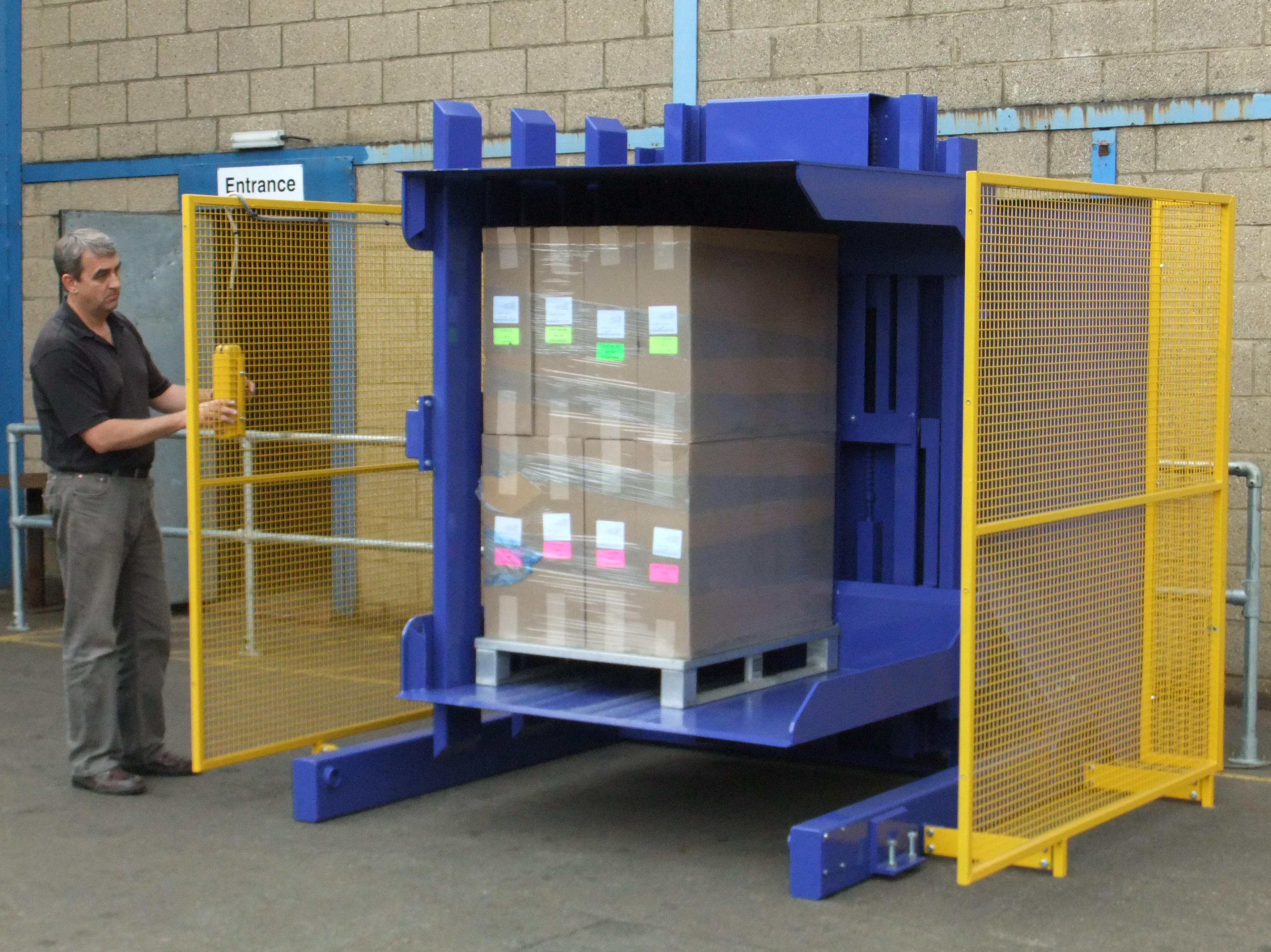
I understand that as a business leader, you look at every investment through a lens of practicality and return. You're not just buying a machine; you're investing in a solution that must solve a real problem. The jump from manual processes to automated ones can seem daunting. But I'm here to share what I've learned from helping businesses make this transition. It's about more than just speed. It's about building a more resilient, efficient, and forward-thinking operation. Let’s explore how this one piece of equipment can address some of the biggest challenges you face today.
How can a pallet inverter address rising operational costs and labor shortages?
In any manufacturing or logistics operation, labor is one of the biggest costs. And the manual process of transferring goods off a pallet is incredibly labor-intensive. You have workers spending hours taking boxes off one pallet and restacking them onto another. This process is slow, expensive, and frankly, a poor use of your team's skills. With labor costs rising and skilled workers becoming harder to find in Mexico's competitive market, continuing this manual process puts a major strain on your budget and your ability to keep up with demand.
A pallet inverter directly tackles these challenges by transforming a multi-person, hour-long task into a one-person, two-minute operation. This machine automates the entire transfer process. It securely clamps the product load, inverts it, and allows the operator to easily swap the pallet. This immediately frees up your workers to focus on more valuable tasks that require human skill and intelligence. It dramatically increases throughput, allowing you to move more products through your facility without needing to hire more people.
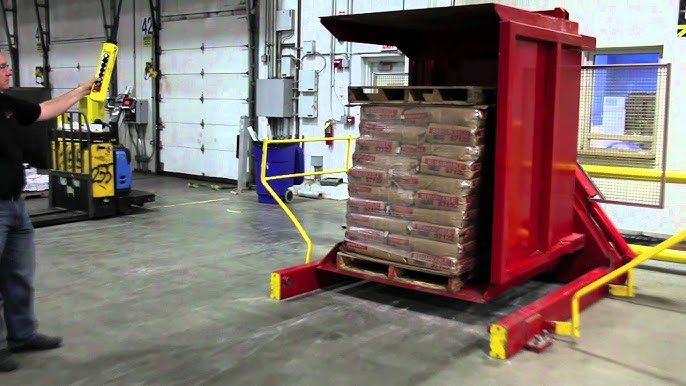
Dive Deeper: Breaking Down the Real Costs of Manual Pallet Handling
When I talk with factory owners like Javier, the conversation often starts with the machine's price. But I always encourage them to look at the costs they are already paying. The expense of manual pallet handling isn't on a single line item in your budget; it's spread across your entire operation, silently eating into your profit margins. Let's break it down with a critical eye.
1. Direct and Indirect Labor Costs
The most obvious cost is the wages you pay employees to manually unstack and restack goods. Think about it: two workers might spend 30 minutes to an hour on a single pallet. If you do this for 20 pallets a day, that's a significant number of man-hours dedicated to a low-value task. But the indirect costs are just as damaging.
- Training: New employees need to be trained on proper lifting techniques.
- Turnover: This is physically demanding work, which leads to higher employee turnover. The cost to recruit, hire, and train a replacement is substantial.
- Supervision: A manager's time is spent overseeing this manual process instead of focusing on process improvement.
2. The High Price of Workplace Injuries
Manual handling is a leading cause of musculoskeletal injuries in the workplace. These injuries are not just unfortunate accidents; they are a direct financial liability.
- Medical and Compensation Costs: A single back injury can lead to tens of thousands of dollars in medical bills and worker compensation claims.
- Increased Insurance Premiums: A poor safety record directly results in higher insurance costs for your entire facility.
- Lost Productivity: When an experienced worker is injured, you lose their expertise. Production slows down, and temporary replacements are often less efficient.
3. Operational Inefficiencies and Product Damage
Manual handling is inherently inconsistent.
- Product Damage: Dropped boxes, crushed corners, and contaminated goods are common. Every damaged item is a direct loss of revenue.
- Production Bottlenecks: The pallet transfer station often becomes the slowest point in the entire logistics chain. This can cause delays that ripple through your production schedule, affecting your ability to meet deadlines.
Here is a simple comparison to illustrate the point.
| Metric | Manual Pallet Swapping | Using a Pallet Inverter |
|---|---|---|
| Time per Pallet | 20-60 minutes | 1-3 minutes |
| Labor Required | 2-3 workers | 1 operator |
| Risk of Injury | High (lifting, twisting) | Very Low (automated) |
| Risk of Damage | Moderate to High | Very Low (secure clamping) |
| Process Consistency | Low | High |
| Operational Cost | High (labor, risk, damage) | Low (energy, maintenance) |
By investing in a pallet inverter, you are not adding a new expense. You are reallocating funds you are already spending on inefficiency and risk into an asset that generates a clear return.
What are the key differences between various pallet inverter models and which is right for a heavy-duty industry like steel?
A common mistake I see is thinking that all pallet inverters are the same. A machine designed for a food processing plant handling light boxes would fail catastrophically in a steel mill. The environment in a steel facility is demanding. You have heavy loads, abrasive dust, and the need for absolute reliability. Choosing the wrong machine is not just a waste of money; it's a serious safety hazard.
For a heavy-duty industry like steel, you must prioritize strength, durability, and capacity. Standard models won't do. You need a pallet inverter built with heavy-gauge steel, powerful hydraulics or electric motors, and a clamping system that can handle immense and often uneven loads, like steel coils or stacked metal parts. The key is to select a model specifically engineered for your product and weight requirements. The two main categories to consider are 180-degree inverters, which are great for fully inverting a load, and 90-degree tippers, which are ideal for changing pallets on loads that are sensitive to full inversion.
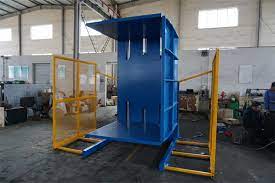
Dive Deeper: Selecting the Right Machine for a Demanding Environment
As an engineer, Javier would appreciate that the devil is in the details. The success of this investment hinges on choosing the right specifications. A machine that is under-specified will lead to frequent breakdowns and compromise safety. A machine that is over-specified is a waste of capital. Let's look at the critical factors for a steel mill.
1. Load Capacity and Clamping System
This is non-negotiable. If your typical load is 1,500 kg, you need a machine rated for at least 2,000 kg to provide a safe operating margin. But it's not just about weight. It's about how the weight is distributed.
- Clamping Pressure: For steel coils or stacked plates, you need a system with adjustable hydraulic clamping pressure. Too little pressure, and the load could shift. Too much, and you could damage the product. Modern PLCs allow you to program specific pressures for different product types.
- Clamp Plate Design: The surfaces that touch your product should be considered. For finished steel, you might need non-marring surfaces like heavy-duty rubber or polyurethane pads to prevent scratches.
2. Construction and Durability
The operating environment in a steel facility is harsh. Airborne dust and debris can wreck standard machinery.
- Frame: Look for a frame constructed from thick, welded structural steel, not bolted sheet metal. All welds should be clean and robust.
- Components: All hydraulic hoses, electrical wiring, and motors should be shielded or enclosed to protect them from the environment. The use of high-quality, sealed bearings is essential.
- Finish: A durable powder coat or industrial enamel finish is necessary to resist corrosion and abrasion.
3. Inverter Type and Loading Method
The right model depends on your workflow and floor space.
| Model Type | Description | Best For | Considerations |
|---|---|---|---|
| Free-Standing 180° Inverter | A self-contained unit. A forklift places the pallet directly into the machine. | High-volume, versatile applications. Swapping broken pallets or transferring to shipping pallets. | Requires more floor space. The most common and robust design for heavy loads. |
| Ramp-Loaded 180° Inverter | Allows loading with a pallet jack instead of a forklift. | Areas where forklift access is limited. Good for ground-level operations. | Slower cycle time than a free-standing unit. Ramps can be an obstruction. |
| 90° Tipper / Load Tilter | Tilts the load 90 degrees to allow the pallet to slide away. | Tall, unstable, or sensitive loads that cannot be fully inverted. Steel sheets, for example. | Less versatile than a 180° inverter. Often used for specific, dedicated tasks. |
For a large-scale steel operation focused on efficiency and reliability, a heavy-duty, free-standing 180° inverter is often the best choice. It offers the fastest cycle times, highest weight capacities, and the most robust construction to withstand the rigors of the industry.
How does integrating a pallet inverter contribute to digitalization and safety goals in a modern Mexican factory?
Many business owners I speak with see a pallet inverter as just a standalone mechanical device. They miss its potential as a key component in a larger strategy. A modern factory is a connected ecosystem. Your goal isn't just to make things; it's to gather data, improve processes, and create a safer environment. A simple pallet inverter can be a powerful tool in achieving this, but only if you see it as more than a machine.
Integrating a pallet inverter into your operations is a concrete step toward your digitalization goals. A modern inverter comes equipped with a PLC (Programmable Logic Controller). This PLC can be connected to your factory's MES (Manufacturing Execution System) or ERP (Enterprise Resource Planning) system. This means every pallet swap can be tracked and recorded automatically. It also becomes a critical part of your safety infrastructure. Instead of relying on workers to follow safety rules, you can engineer out the risk. The machine enforces a safe process every single time, using light curtains, safety cages, and pressure sensors to protect your people.
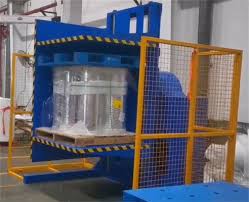
Dive Deeper: From a Machine to a Smart Factory Asset
Let's move beyond the mechanical function and look at how this machine becomes a data-generating, risk-reducing asset in a forward-thinking company like Javier's.
1. Driving Digital Transformation (Industry 4.0)
Javier's goal to deploy MES, IoT, and big data is exactly the right direction. A pallet inverter can be an early, easy win in this strategy.
- Data Integration: When the inverter's PLC is connected to your MES, you gain real-time visibility. You can track how many pallets are processed per hour, monitor cycle times, and identify bottlenecks. This data is essential for accurate production planning and hitting that 95% capacity utilization goal.
- Predictive Maintenance: We can equip inverters with IoT sensors to monitor key components like the hydraulic system's pressure and temperature or the motor's vibration. This data can be fed into an analytics platform to predict potential failures before they happen. This shifts you from reactive maintenance (fixing things after they break) to predictive maintenance, a core pillar of a smart factory. This directly addresses the challenge of aging equipment and unplanned downtime.
- Automation and Workflow: In a fully automated line, the inverter can receive signals from an upstream conveyor to begin its cycle and send signals to a downstream AGV (Automated Guided Vehicle) when the new pallet is ready. It becomes a seamless part of a truly "smart" material handling system.
2. Engineering a Safer Workplace
Safety is not just about rules and training; it's about designing a process where the safe way is the only way. A pallet inverter is a perfect example of this principle, known as Poka-Yoke (mistake-proofing).
- Light Curtains and Area Scanners: These create an invisible safety field around the machine. If a person or object crosses the beam while the machine is in motion, it stops immediately. This is far more reliable than relying on an operator's situational awareness.
- Dual-Hand Controls: Requiring an operator to use both hands to start the cycle ensures their hands are away from any moving parts.
- Enclosed Guards: Physical guarding prevents accidental access to the clamping and rotating mechanisms during operation.
- Controlled Process: The machine handles the heavy, awkward load with smooth, controlled movements. It eliminates the risk of slips, trips, and strains associated with manual stacking.
By investing in a pallet inverter with these features, you are making a clear statement that safety is a priority. This not only protects your employees but also reduces liability and strengthens your company's reputation.
What is the real ROI of a pallet inverter beyond just swapping pallets?
Every CEO, especially one with an engineering or MBA background like Javier, needs to justify an investment with a solid Return on Investment (ROI). It's easy to calculate the savings on labor. But if you stop there, you're missing more than half of the picture. The true value of a pallet inverter extends far beyond the direct cost savings. It acts as a catalyst for broader operational improvements.
I remember working with a client who ran a large distribution center. He was hesitant about the upfront cost of a heavy-duty inverter. He saw it as an expense. I asked him to track not just labor, but also product damage from manual handling and downtime caused by injuries for one month. The numbers were shocking. The "hidden" costs were more than three times the direct labor cost for that task. The real ROI comes from a combination of hard savings you can measure on a spreadsheet and strategic value that positions your company for future growth and resilience. It's about reducing risk, improving quality, and increasing the overall velocity of your entire operation.
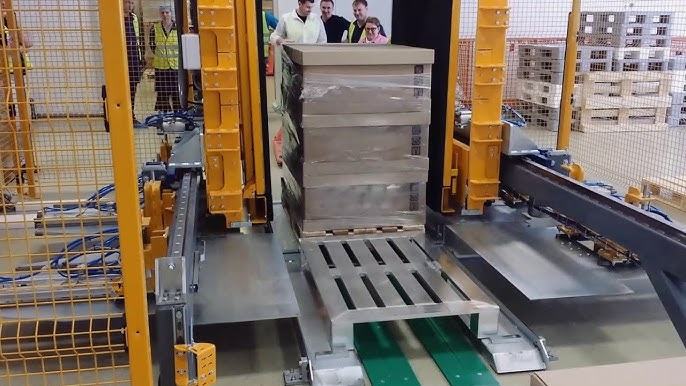
Dive Deeper: A Holistic View of Your Return on Investment
A sophisticated leader like Javier understands that an investment's worth is measured by its total impact on the business. The pallet inverter is a prime example of an asset whose benefits ripple across multiple departments. Let's analyze the ROI from a holistic perspective, separating the tangible from the strategic.
1. Tangible, Measurable Returns (The "Hard" ROI)
These are the numbers you can take to the bank. They directly address the goal of lowering overall operating costs.
- Drastic Labor Reduction: This is the most immediate return. Calculate the hourly wage (including benefits) of the workers currently doing this task, multiply by the hours spent per day, and you'll see a significant saving. A single operator replaces a team of 2-3 manual handlers.
- Elimination of Product Damage Costs: Track the value of goods damaged or destroyed during manual transfer over a month. A pallet inverter handles loads securely, reducing this number to near zero. This is pure profit added back to your bottom line.
- Lower Insurance and Compensation Costs: A safer workplace with fewer injuries leads directly to lower workers' compensation insurance premiums. While this takes time to realize, it's a significant and recurring annual saving.
2. Strategic Value and Intangible Returns (The "Soft" ROI)
These benefits are harder to quantify but are arguably more important for long-term success and achieving goals like digital transformation and market responsiveness.
- Increased Throughput and Capacity: By speeding up the pallet transfer process, you eliminate a major bottleneck. This allows your entire production or shipping line to run faster, directly contributing to the goal of increasing capacity utilization.
- Improved Quality Control: It allows for easy removal of damaged goods from the bottom of a stack without disturbing the entire pallet. It also facilitates the insertion of freezer-spacers or the transfer to cleaner, in-house pallets to prevent contamination.
- Enhanced Operational Flexibility: You are no longer tied to one pallet type. You can easily transfer goods from inexpensive, low-quality incoming pallets to high-quality, standardized pallets for your automated warehouse system or to specific export-compliant pallets (like ISPM 15). This agility is crucial when dealing with volatile market demands.
- Boosted Employee Morale: By investing in tools that make your employees' jobs safer and less physically taxing, you show that you value them. This leads to higher morale, lower turnover, and a more engaged workforce.
The decision to invest in a pallet inverter is not just about fixing a single problem. It's a strategic move that makes your entire operation faster, safer, smarter, and ultimately, more profitable.
Conclusion
Investing in a pallet inverter transforms a manual cost center into a smart, efficient asset, boosting safety, enabling digitalization, and delivering a powerful, multifaceted return on your investment.




